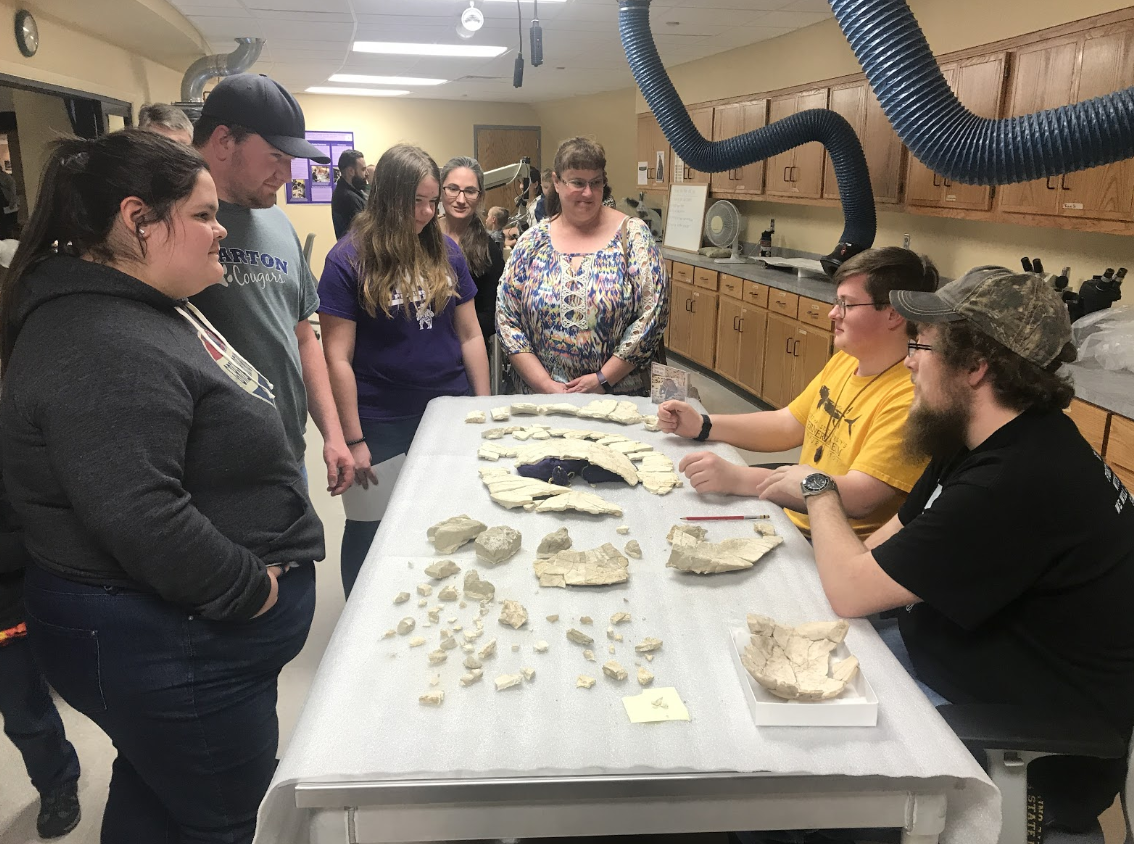BY NICHOLAS COUNTS
On Sunday, February 6th, the Sternberg Museum of Natural History welcomed over 440 visitors to celebrate Darwin Day. Darwin Day is an international celebration of the life and work of Charles Darwin, the legendary British naturalist known for first postulating the Theory of Evolution. Darwin has been a controversial public figure, and misinformation abounds surrounding his theory, but Darwin Day at the Sternberg hopes to try and amend some of this by supporting clear communication of science to the public.
The event lasted from 1:00 to 5:00 and featured several stations scattered around the museum with examples of the research done at the Sternberg in advancing our understanding of evolution. Special significance was given to the role of communication in research and how the best research involves communicating findings both to other scientists and the public.
Downstairs in the lobby, fossil expert Mike Everhart oversaw a booth and subsequent reception replete with cookies and sherbert punch. Everhart was the lead author alongside fellow adjunct curator Dr. Kenshu Shimada on a paper published in November formally describing a new species of shark from the ancient ocean that once covered much of Kansas.
The shark, dubbed Cretodus houghtonorum, swam the shallow Kansan ocean 91 million years ago and is estimated to be a fearsome 17 feet long, about the size of a modern great white shark.
“It’s the best of this particular kind of shark in North America,” said Everhart. “It’s the newest species we’ve got here at the museum, and we’re just really proud to have it.”
Upstairs, several volunteers of the Oceans of Kansas Prep Lab offered visitors a rare public tour of the facility where the fossils are cleaned and prepared for study. Inside the lab, the volunteers showed off the multitude of different techniques in preparing fossils including using sand to stabilize bones as they are glued back together, the use of a 3D scanner to create full models of the fossils in a computer, and the use of toothpicks to rub away the soft Kansas chalk from bones.
Alongside bones of fish and mosasaurs, visitors walked past the shattered shell of a fossil tortoise as two grinning volunteers told kids about their painstaking work restoring it. The manager of the lab, Ms. Tia Ruppert, was very happy with the turnout:
“Lots of visitors came and learned a lot about what we do in the prep lab and how prepping out fossils helps to support the paleontological research that happens in the Sternberg Museum,” Ruppert said. The museum looks forward to their next big public event, Pokemon Day this April.”

